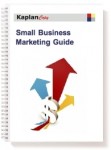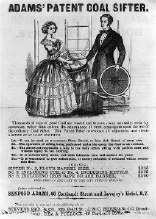You’re probably wondering how anything published in 1920 could possibly be relevant in 2009. No twitter tips? No super-networker’s secrets on using LinkedIn? Not one.
The closest thing they had to social media were dead-tree newspapers and radio. And, hey, the music and the clothes were weird.
Technology has changed, but basic marketing principles are still the same. Debates rage over long or short copy now (as they did then), some companies try to sell to everyone (while others focus on a niche), and everyone looking at your ad, reading your blog, or scanning your letter wants to know what’s in it for them.
Should my copy be long or short?
Write as much (or as little) as you need to tell your story. Long isn’t better, and short isn’t better. Better is what works with your customers.
Use headlines, bold type, and bullets. Break the copy up into chunks, so it’s more readable. People will skim, but if they’re interested, they will read more closely.
Sell to your target market (not everybody)
You are talking to thousands of people. Some will be interested (some won’t). The response of people “in your industry” doesn’t matter. The response of your potential customers does. Try to strike a chord with them. If you are advertising cars, you have no use for non-drivers.
Nobody will read your entire ad to find out if your product is appealing. They will glance at it, and decide based on the headline or the picture. Talk only to the people you seek as customers.
Be specific, not vague
Saying “the best in the world” or “lowest prices” or “reliable” simply states the expected and obvious. They often lead readers to discount what you say, rather than believe you.
Instead, be specific. If the exhibits you designed attracted 37% more traffic, say so. There’s a reason why Ivory Soap is marketed as 99 44/100% pure.
The book? It’s called Scientific Advertising by Claude C. Hopkins. Click here for your free copy.



 Offering a free report on your Web site is a great way to get more prospects. However, after you’ve spent lots of time writing the report, designing it, and putting together a campaign to promote it, it’s easy to overlook one simple thing that can make a huge difference in how many people ask for your report.
Offering a free report on your Web site is a great way to get more prospects. However, after you’ve spent lots of time writing the report, designing it, and putting together a campaign to promote it, it’s easy to overlook one simple thing that can make a huge difference in how many people ask for your report.
